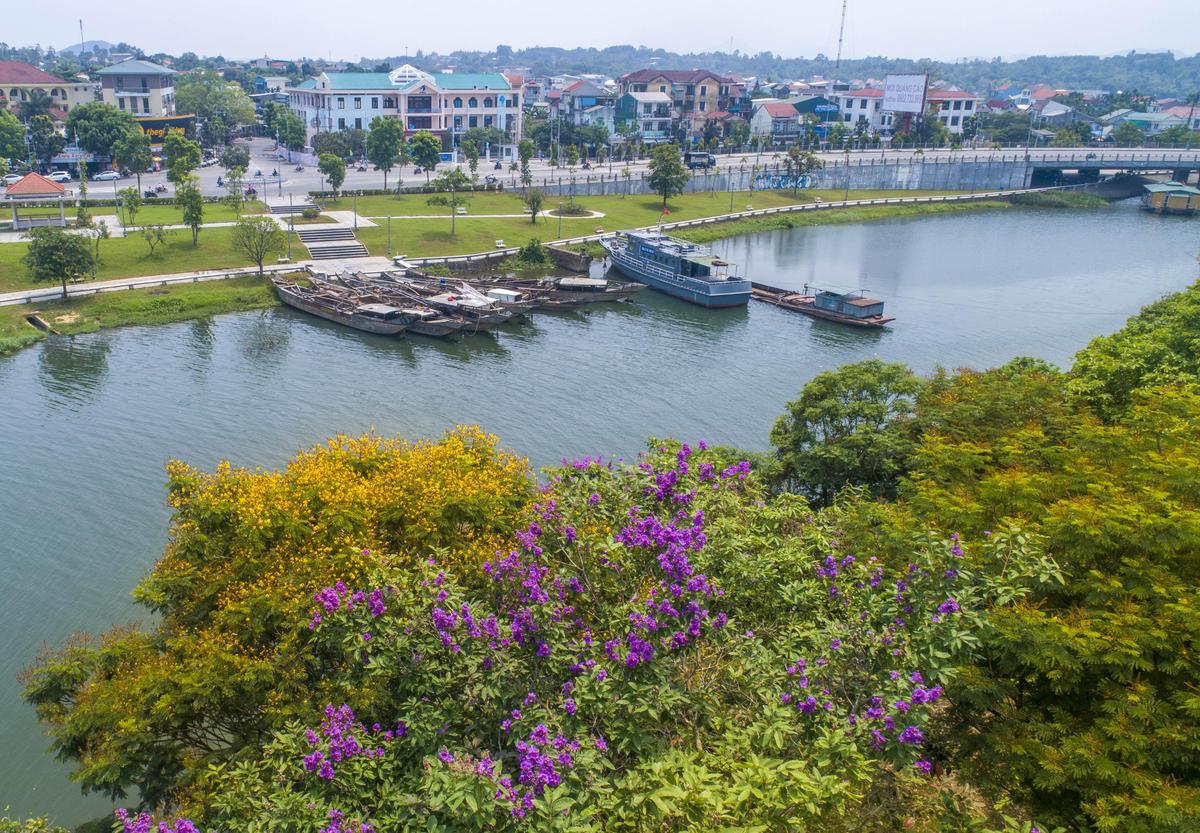
The ancient capital of Hue is enjoying an April floral shower that adds to its romantic charm.
The ancient capital of Hue is enjoying an April floral shower that adds to its romantic charm.
 |
Frangipani trees with white flowers bloom inside the Imperial Citadel surrounding a pavilion’s courtyard. The fragrance of the blooms is more pronounced at night.
Hue, in central Vietnam, was not only the political seat of power but also a cultural and religious hub under the Nguyen Dynasty, Vietnam's last royal family that ruled the country from 1802 until 1945.
 |
Ngo Dong trees, known as Chinese Parasol tree, never fail to charm visitors at this time of the year as the vibrant pink flowers decorate trees that have temporarily shed their leaves.
 |
It is a legend in East Asian culture that the phoenix only perches on the Chinese Parasol trees. Hue residents believed that these flowers were a symbol of royal family and only grown in sacred and noble places like royal tombs and the Forbidden City.
Dragons and phoenixes are sacred animals in Chinese and Vietnamese cultures, and were, once upon a time, emblems of the emperor and empress.
 |
April is the best month to take in the beauty of the yellow Phoenix flowers that bloom all over Hue, and can be enjoyed on Ngo Quyen, Le Loi and Tran Hung Dao streets.
 |
With the tree planted all along the perimeter of the citadel, the flowers can be seen in great profusion at this time of the year.
 |
The brilliant yellow of the Phoenix flowers mingle with the pink of crape-myrtle on the Da Vien Islet, formed by silt deposits from the Huong (Perfume) River.
 |
Lotuses are grown in many locations around Hue for offering to the Buddha, as decoration at homes and business establishments like hotels and restaurants, and for making the famous lotus scented tea.
As summer approaches, lotus flowers in white and pink dot Hue’s landscape and their distinct fragrance is enchanting.
(Source: VNexpress)




